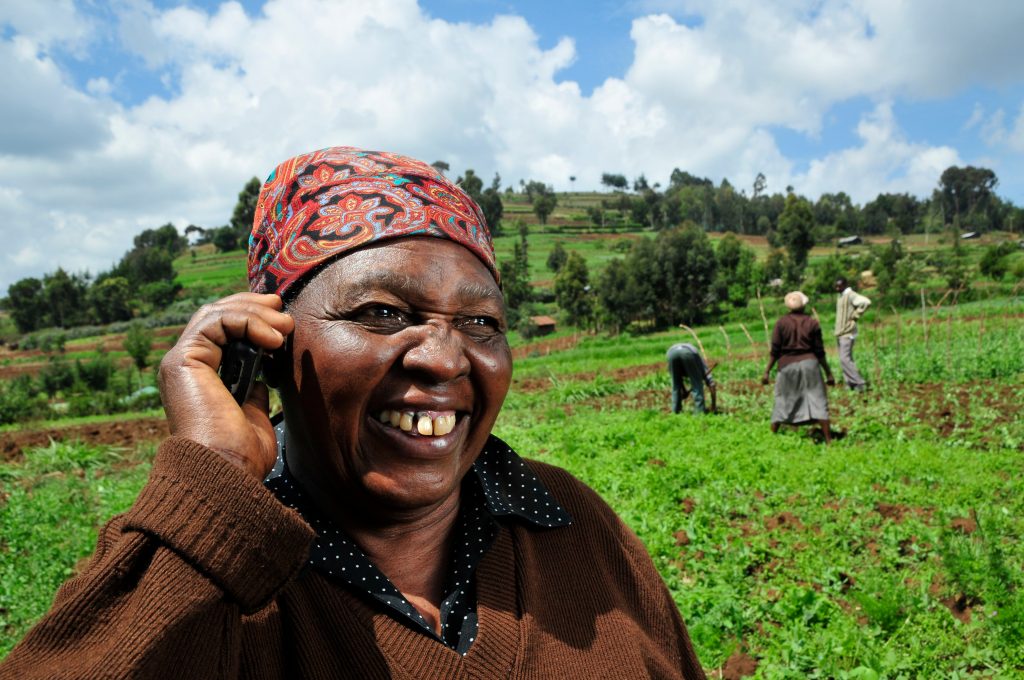6 technologies are leading profound digital transformations of our supply chains: drones, blockchains, augmented reality, Internet of Things, virtual reality and robots. Actual deployment of these technologies, taking the illustrative example of agricultural commodity supply chains, is facing major challenges of trust and adoption, training to effectively use the technologies, access to resources ensuring scalable deployment despite complexity and fragmentation. How to improve supply chain management addressing these 3 major challenges? Here are some insights learning from initiatives underway making the most especially of mobile applications and innovative finance.
Market Pressures Encouraging Chief Procurement Officers to Accelerate Traceability and Accountability Across Agricultural Commodity Supply Chains
There clearly are growing regulatory, investors and client pressure encouraging companies to make significant progress on transparency. Why?
- From a regulatory perspective, climate and human rights are increasingly framing a business environment where Business C-Level can be exposed to criminal responsibilities in absence of proper due diligence and transparency showing genuine efforts to understand and mitigate related risks.
- From an investor perspective, several juridictions including Canada, France, United Kingdom or Sweden are actively expanding the concept of fiduciary responsibility, including climate and social risks as part of asset manager responsibilities. This is also strongly calling for wider and deeper transparency of entire supply chains no matter complexity at stake.
- Clients across a large number of sensitive industries, including food, automotive, luxury or energy companies are asking for greater transparency on their supply chains to demonstrate capacity to execute on their own environmental, ethical and social commitments.
Overall, technologies available today have the potential to provide cost effective solutions addressing the business demand, despite the huge complexity at stake.
Challenges using digital technologies for better agricultural commodity supply chains
Every discussion with business leaders as well as potential stakeholders on the ground (e.g. : operators, smallholder farmers) are always pointing to the same challenges:
- Trust. Very important to convince opinion formers and prescriptors whether and how new technical solutions can guarantee trusted transactions. With blockchain technologies for instance, using technical responses (e.g. the fact that multiple replication of database are making hacking difficult) is generally not convincing. Potential users need to test with small amount of money, before they can invest more value using the system. With applications collecting data (e.g. GPS location, personal data), people are increasingly proactively asking questions related to their own privacy – even in remote areas…
- Technical expertise to properly use technology. Across many agricultural commodity supply chains, there is a noticeable divide between generations above / under 40 years of age or so. Across many markets, 45+ people have challenges using smartphone and tend to focus on simple features (calling, sending text messages…). Younger generations tend to use smartphones at growing scale and overall embrace technologies with much more appetite. For example, drones and machine learning features making day to day work more productive are very welcome.
- Early bird. Most of these emerging technologies makes sense only through massive adoption. It is pointless to use blockchain on your own. Internet of Things becomes valuable only when chains and communities of users are using connected equipments together… Access to finance and incentivization of investments at very large scale (reaching millions of users fast and effectively) is really critical to overcome the early bird challenge and actually impact practices on the ground.
Over the past 5 years, Business C-Level at the far end of these complex agricultural commodity supply chains has clearly understood overall that massive investment in digital solutions was needed to keep up with competition, demonstrate curiosity exploring business implications of new technologies on multi faceted aspects of their strategies and operations, and demonstrate resilience adapting companies to the profound digital transformations underway. They are clearly expected to increase investments in the years to come, which is doom to accelerate massive adoption of digital technologies at farm level in the years to come. The decade to come will witness profound changes in the way rural areas in Africa or South East Asia will lead agricultural activities.
Guidance to Accelerate Adoption and Scalable Deployment of Digital Technologies Across Agricultural Commodity Supply Chains
Every example I’ve witnessed across the recent years have followed the same pattern :
1. Focus on Sensitive Categories Combining Strong business case with unsatisfactory solutions to date
First, large companies and buyers need to focus on sensitive categories where solutions in place have never proven to be satisfactory.
- For instance, in the food industry, the question of sanitary protection and traceability has huge business implications. Chains are complex in volume as well as number of transactions. Cost effective solutions to date focus mostly on sampling approaches which do not provide the level of confidence needed to seriously address the business risks at stake. In this example, blockchain is an attractive technology with potential to provide a disruptive solution managing trusted traceability of large scale volumes of sensitive goods.
- Another example comes with vocational training. Across virtually every agricultural commodity supply chain, smallholder farmers always complain to lack access to vocational training, impacting directly their safety, productivity as well as level of income. Multiple stakeholders have been working on numerous training programs, but find it overall difficult to provide cost effective solutions addressing millions of people across fragmented chains. In this example, using smart phones to provide access to training material, including AR and VR technologies can have huge impact on the day to day practices on the field.
2. Pilot and Build Adoption Testing Technology on an Illustrative Category of Intermediate Complexity
Second, companies select and explore very specific chains to test innovative solutions. Procurement would focus on an illustrative category of intermediate complexity to better understand how to deploy technologies and further understand pros, cons, implications and benefits
- For example, the food industry has been testing blockchain solutions exploring illustrative products (eggs, poultry, beef, cheese…). Complexity of these chains is intermediate, but offers an interesting playground to understand how blockchain based transactions are impacting relationships, costs and order processes between clients and suppliers. They also offer an interesting test to explore collaboration across departments within companies (e.g.: procurement, billing and marketing). This point is critical. At the end of the day, the real challenge with deployment of new technologies is not only to connect stakeholders across complex value chains, but also stakeholders within same organizations. Beyond the client / supplier transactional relationship, the sales / finance / logistics transactional relationship taking place within a very same human organization is clearly at play. Adoption and alignment is critical, yet sensitive.
- On another example, data collection building risk profile of large and complex supply chains has been underway for more than a decade. Specific commodities have been requesting more specific collection of data, and explored digital solutions. The sourcing of biomass feedstocks, cocoa or natural rubber can be good examples.
3. Leverage Innovative Finance to Scale Up Deployment of Solutions, and Onboard Millions of Users
Third, companies are exploring ways to expand learning across additional chains or categories. They are facing the following challenges:
- Cost effective deployment of resources. Chains are fragmented and complex. They can quickly involve millions of stakeholders. Luckily, most if not all of these people across smallholder farms, plantations, factories and logistical hubs are using mobile phones. Despite the fact that an estimated 3,7 billion people are still offline, penetration of smart phones and broadband coverage is deploying across the whole globe as well as many fairly remote rural areas. Mobile phones are no doubt a great and powerful vehicle to use to connect chains, disseminate content, impact practices.
- Dilution of responsibilities. Large buyers are generally reluctant to take too visible responsibilities improving agricultural commodity supply chains on the ground. They don’t want to overstep with their business partners and suppliers. Also, many environmental and social issues may have a strong political dimension, and buyers prefer to stay clear from this space. Finally, when a so called “big buyer” generates 15% or so of transactions, actual power and influence remains limited to change practices on the ground. Building financial vehicles encouraging an ecosystem of stakeholders to develop a joint fund working on specific priorities (traceability, vocational training for instance) can be a powerful initiative to aggregate resources, and dilute responsibilities relying on a third party responsible for the fund management and deployment of associated programs. The financial fund may be allocated to multiple activities ensuring access and adoption of technologies: loan to buy equipment, capital ownership to enable access to resource and expertise to strategic business partners, scalable training program using digital content through mobile phones to ensure broad content dissemination across the chains
- Presence. Presence. Presence. The above provides good foundation to manage challenges and deploy technologies with pertinent vehicles. But at the end of the day, changing and improving agricultural practices on the ground remains driven by trusted relations building – or not – adoption. Convincing opinion formers and prescriptors, incentivizing farmers, combining digital based contents with presential meetings or training sessions are all very critical to integrate the day to day social life of
In response, focusing on sensitive and strategic categories, taking the time to learn pros, cons, implications and challenges deploying solutions through illustrative products, and making the most of digital solutions and innovative finance are increasingly explored and no doubt the way forward to improve practices on the ground. Big changes are underway and will doubtless shape very different practices across many agricultural commodity supply chains in the years to come.
Author of several books and resources on business, sustainability and responsibility. Working with top decision makers pursuing transformational changes for their organizations, leaders and industries. Working with executives improving resilience and competitiveness of their company and products given their climate and human right business agendas. Connect with Farid Baddache on Twitter at @Fbaddache.





